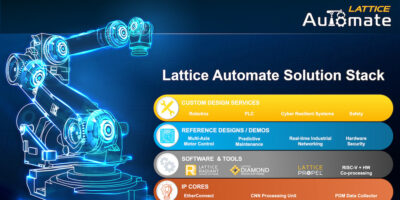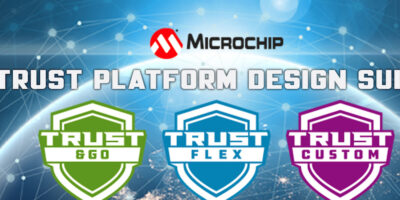Microchip has added enhancements to its Trust Platform Design Suite (TPDS) with dedicated software for device configuration and onboarding to Microchip secure provisioning services for embedded security.
TPDS 2.0 software extends the company’s Trust Platform for CryptoAuthentication which is believed to be the first pre-provisioned platform for hardware-based secure elements to implement secure authentication.
The software enables Microchip partners to add use cases to its security solutions onboarding ecosystem and includes support for additional security solutions such as the TA100, the first cryptographic companion device for the automotive market.
It can take an experienced firmware engineer months to specify an application’s threat model and develop a security use case that encompasses all necessary measures related to secure authentication, secure boot, IP protection, and more. The two main challenges are configuring the device’s security boundaries and provisioning secrets including private keys as well as symmetric secrets and other forms of secret data.
The TPDS software simplifies the process of specifying an application’s threat model and developing a secure use case which includes all measures to secure authentication, secure boot and IP protection. This is achieved by providing pre-defined use cases addressing the most common market requirements.
It is available with Trust&GO and TrustFLEX programs which enable new secure projects to be prototyped in a matter of minutes says Microchip. At the same time customers are presented with options based on the size of their deployment, use case requirements, and how much customisation they need.
Using Trust&GO, devices are pre-defined and pre-provisioned, off-the-shelf, for secure cloud authentication in both TLS-based and LoRaWAN-based networks. Minimum order quantity (MOQ) is just 10 units.
TrustFLEX allows customers to use the program’s pre-configured devices either with default generic certificates or their own credentials (Custom PKI). There is a broader range of pre-defined uses cases than with Trust&GO.
To address the most demanding use cases, Microchip’s TrustCUSTOM family gives customers the freedom to fully define the secure authentication configuration and fully customise secure key storage.
The TPDS v2 has an integrated onboarding flow which allows a customer to select a security solution, validate its use case, prototype it, and then start the process of secure provisioning.
TPDS v2 also enables third-party partners to add their own use cases to improve customer options for secure element onboarding and security features. Partners include EBV Elektronik (part of the Avnet Group). EBV Elektronik enables TPDS v2 users to connect to the Avnet IoTConnect Cloud quickly and securely through the ATECC608B TrustFlex configuration using the EBV-IoT Secure Shield evaluation kit.
Other features of TPDS v2 are training videos and interactive application notes spanning a variety of use cases for onboarding security, users can develop applications based on the selected use cases, finalise the security solution configuration, and perform the secret key exchange. There is also the facility to procure verification samples and start production.
The Trust Platform Design Suite is supported on Windows and macOS environments. The TA100 configurator is only available for the Windows platform.
Microchip’s open-source Trust Platform Design Suite is available for download on Microchip’s website at no cost for Trust&GO and TrustFLEX flows. The site also allows access to training videos, interactive application notes, C code and other project support. TrustCUSTOM software extensions for TPDS are available under NDA.
http://www.microchip.com







